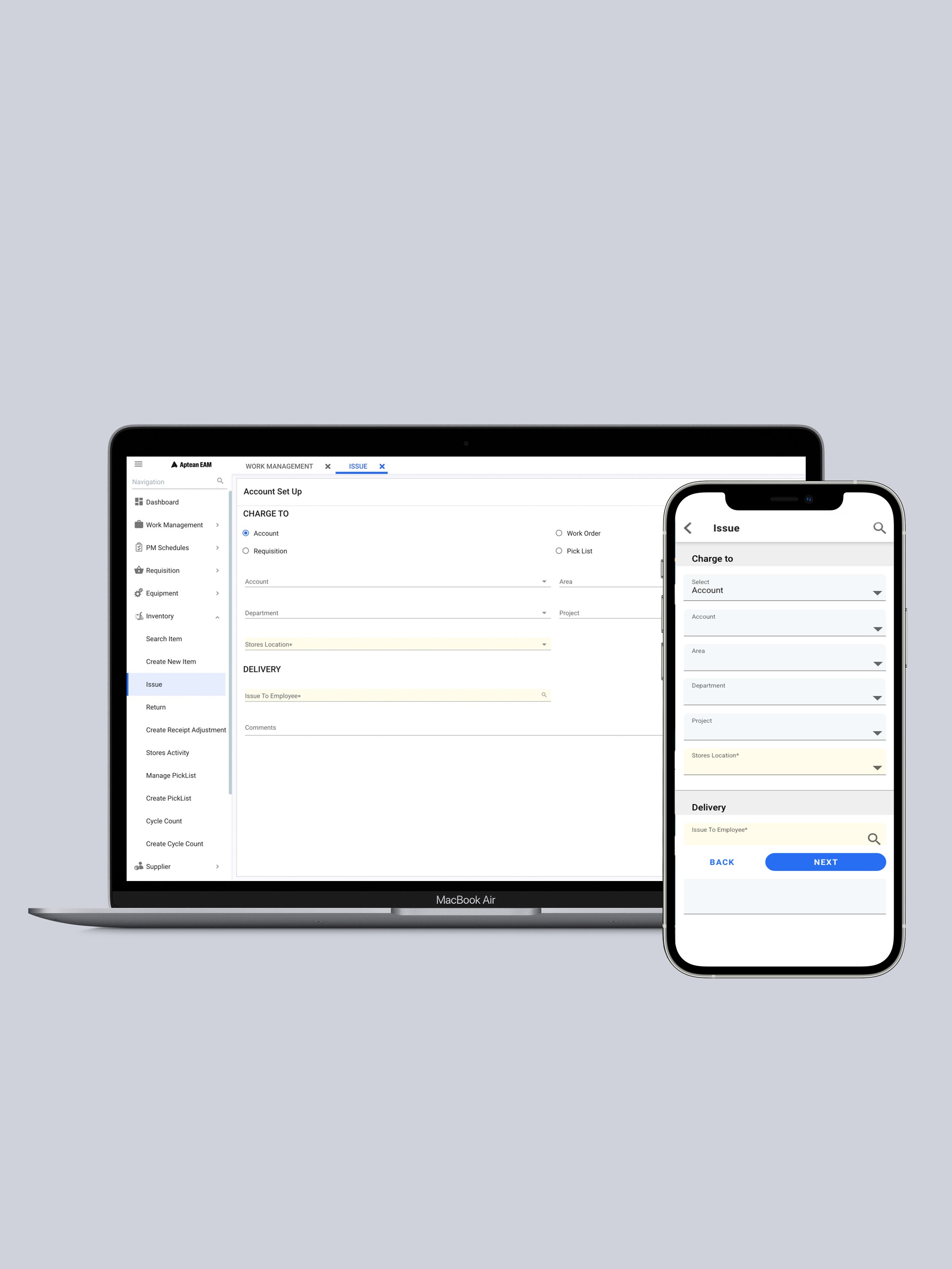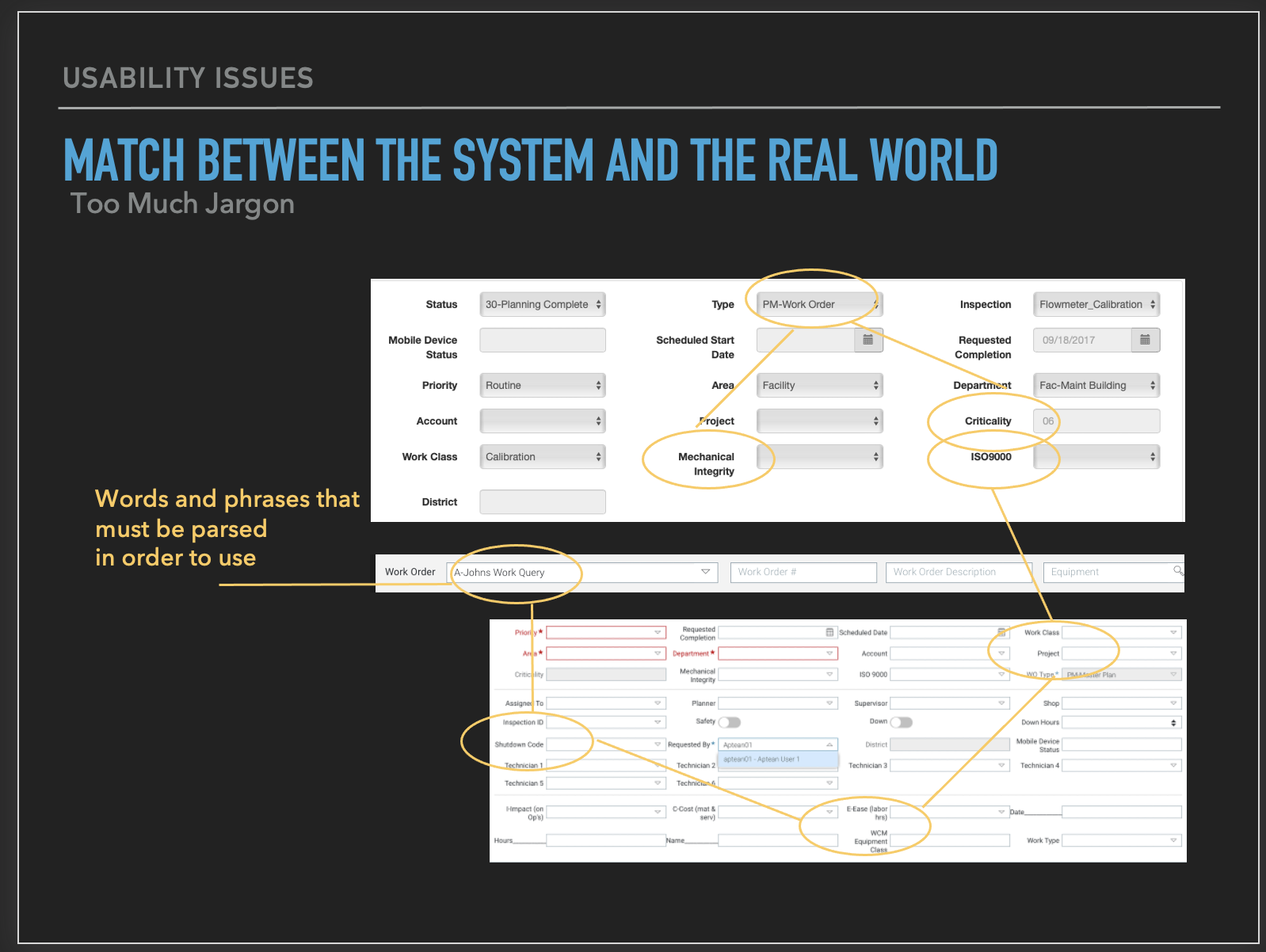
Aptean Enterprise Asset Management

Creation of the Aptean Enterprise Asset Management (EAM) app derived from old software (TabWare). App design focused on providing the same functionality as TabWare with better usability and more modern aesthetics
TEAM MEMBERS
ASIA ASBERRY
MY ROLE
USER EXPERIENCE DESIGNER
User Interface Designer
TIMELINE
2019 - Present
MY CONTRIBUTION: JUNE 2021 - PRESENT
TOOLS USED
Adobe xd
BACKGROUND
WHAT IS aPTEAN EAM/Tabware?
Aptean EAM/TabWare is an EAM/CMMS (computerized maintenance management software) solution for asset-intensive manufacturing and oil & gas organizations to maximize asset performance, reduce maintenance costs, and improve operational efficiency, all with a lower total cost of ownership. Because it is designed by maintenance professionals for maintenance professionals, the job's daily demands are built into the fabric of EAM/TabWare's comprehensive, yet easy-to-use, functionality.
Objective
Reinvent the Tabware app to address user needs and pain points while also providing a clean, modern interface
Research
Beginning in 2019, TabWare was due to be converted into another SaaS platform (which would eventually become Aptean EAM). Initially, this conversion was being made by developers without the input of the UX team, however, due to early negative feedback from users about the new SaaS platform, the UX team was brought in to assist in the redesign.
After a survey was sent to users and coinciding heuristic evaluations for flows within TabWare, it was discovered that TabWare was actually outperforming the new SaaS replacement both on the survey and heuristic reviews.
Due to COVID-19, in-person interviews and demos with TabWare were halted. However, since one designer lived approximately 5 miles from a factory using TabWare, he was able to go to observe maintenance employees using the software in realtime. During his observation time, he took note that the way the employees used TabWare was completely different than developers thought they did.
IDEATION
A notable part of the complete TabWare UX and UI overhaul was a solution for a key component of the app that employees relied on heavily: the ability to search for equipment used in previous work orders, pull the spec sheet for the equipment, and determine if it could be used in a current work order. After a second round of (virtual) interviews with different users than the factory employees that had been observed, users confirmed they also used this vital function of TabWare. Unfortunately, the new SaaS platform the developers were working on would prevent users from going back to previous work orders and would force them to know all equipment information upfront.
Due to time constraints, requiring the development team to completely rework the backend to accommodate major changes from the UX team was not feasible. To address the need for users to be able to explore information within a flow, the “contextual dock” (below) was formed. This addition allows users to access applicable information related to work orders, equipment, purchase orders, etc. and updates based on what selections they make. Now, users do not have to leave the current screen to view details of what they are looking for.

LIMITATIONS
Many users of TabWare are people who are 55+ who use flip phones over smart phones. This coupled with TabWare’s outdated interface meant that some of the visual patterns utilized by Aptean’s REACH Design System (that mirrors Google’s Material Design) were not as recognizable as they may have been to users more familiar with modern digital interfaces. During user testing, some users did not recognize the new rounded buttons as buttons. This problem was rectified by changing them from rounded to rectangular.
COVID-19 has also continued to affect the research process as scheduling user interviews and tests, whether virtual or in-person, has not been able to happen. It would be great to be able to hear from users about the current iteration of EAM
Personal limitations: I joined this project at the end of its’ second year and was not there for the formative research and ideation and with COVID-19 throwing a wrench in operations, I have not been able to do my own research to aid in design decisions.





